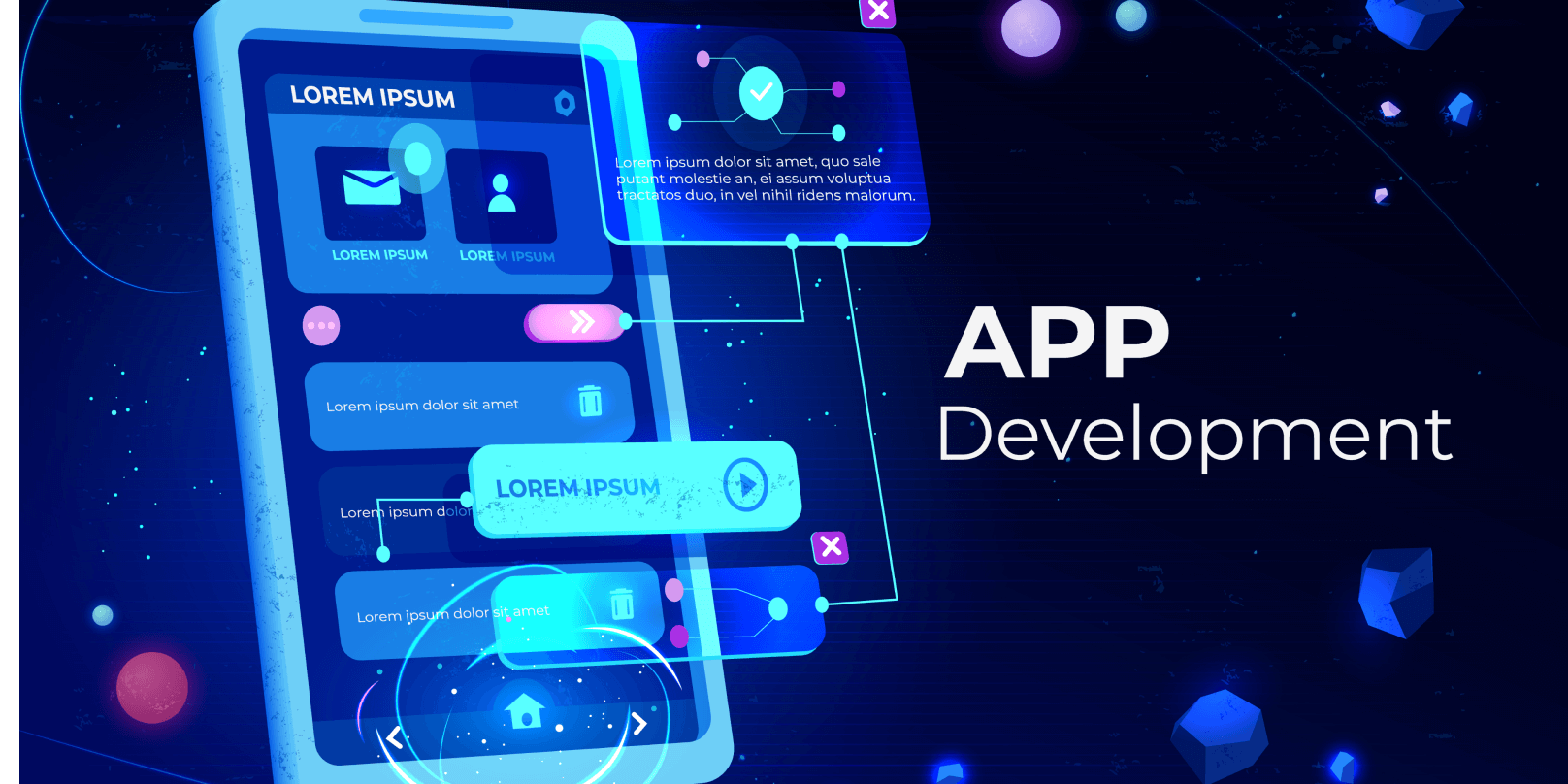Introduction to Mobile App Development
In today’s tech-driven world, mobile apps are no longer a luxury—they’re a necessity. With over 5 billion smartphone users worldwide, businesses are looking for ways to connect with their customers through engaging, easy-to-use mobile apps. Whether you’re building a fitness tracker, an e-commerce app, or a social media platform, mobile app development is key to offering valuable experiences on smartphones and tablets. In this article, we’ll explore mobile app development from its core concepts to the latest trends shaping its future.
What is Mobile App Development?
Mobile app development is the process of creating software applications that run on mobile devices, such as smartphones and tablets. It involves designing, coding, testing, and deploying apps to various app stores like Google Play and Apple’s App Store. Mobile apps can serve a wide variety of purposes—from entertainment and social interaction to productivity and business services.
The Evolution of Mobile Apps
Mobile apps have come a long way since the days of simple utility apps. Initially, apps were basic tools like calendars or calculators. However, as mobile technology advanced, apps grew to include everything from entertainment (streaming platforms like Netflix) to health tracking (fitness apps like MyFitnessPal). Now, mobile apps incorporate cutting-edge technologies like augmented reality (AR), artificial intelligence (AI), and machine learning.
Types of Mobile Apps
There are three primary types of mobile apps:
- Native Apps: Built specifically for a particular operating system (iOS or Android) using platform-specific languages like Swift or Kotlin.
- Hybrid Apps: A blend of native and web technologies that can run on multiple platforms.
- Web Apps: Accessed through a browser and not downloaded to the device, but designed to provide a native app-like experience.
The Mobile App Development Process
Building a successful mobile app involves several stages, from idea conception to launching the app in an app store. Here’s a breakdown of the key phases:
Planning and Research
Before you begin developing an app, thorough planning and research are essential. This phase involves defining the app’s goals, understanding the target audience, analyzing competitors, and identifying the unique features that will set your app apart. Research also helps you decide on the best platform (iOS, Android, or both).
UI/UX Design
A well-designed user interface (UI) and user experience (UX) are crucial for keeping users engaged. During this phase, designers create wireframes, mockups, and prototypes that show how the app will look and function. The goal is to ensure the app is intuitive, visually appealing, and easy to navigate.
App Development and Coding
Once the design is set, the development process begins. Developers code the app based on the design specifications using the chosen platform and programming language. This is where the app starts to take shape, and the functionality gets implemented.
Testing
Testing is one of the most critical phases in the software point.com. It ensures the app functions as expected across different devices and operating systems. Types of testing include functional testing, performance testing, and usability testing. Developers fix any bugs or issues found during this phase to ensure the app performs optimally.
Deployment
After the app is tested and refined, it’s time to deploy. The app is submitted to app stores like Google Play or the Apple App Store for review. Once approved, the app becomes available for users to download. Post-deployment, the app is monitored for performance and user feedback.
Native vs. Hybrid vs. Web Apps
The decision on whether to build a native, hybrid, or web app depends on your app’s goals, target audience, and available resources.
Native Apps
Native apps are built specifically for a platform (iOS or Android) using the platform’s native programming languages—Swift or Objective-C for iOS, and Java or Kotlin for Android. Native apps provide the best performance and user experience, as they are optimized for a specific platform.
Hybrid Apps
Hybrid apps are a mix of native and web apps. Built using web technologies like HTML, CSS, and JavaScript, they are packaged in a native container and can be deployed across multiple platforms. While hybrid apps offer faster development and cost efficiency, they may not provide the same performance or access to device-specific features as native apps.
Web Apps
Web apps are mobile-optimized websites that can be accessed via a browser. They don’t need to be downloaded or installed on a device, making them cost-effective and easy to update. However, web apps typically have limited functionality and cannot take full advantage of native device features.
Top Mobile App Development Platforms
When developing a mobile app, choosing the right platform is crucial for success. Below are the most popular platforms for mobile app development:
iOS Development (Swift and Objective-C)
Apple’s iOS platform powers millions of devices worldwide, and Swift is the go-to language for iOS app development. Swift offers high performance and modern features, while Objective-C, though older, is still used for maintaining legacy apps. iOS apps offer a seamless and polished user experience, but iOS development can be more restrictive than Android development due to Apple’s guidelines.
Android Development (Kotlin and Java)
Android apps are built primarily using Kotlin or Java. Kotlin is a modern language that offers concise code and greater compatibility with Android’s features, while Java remains widely used for Android development. Android offers more flexibility in terms of device selection and features but often requires additional testing due to the wide variety of devices it supports.
Cross-Platform Development (Flutter, React Native, Xamarin)
Cross-platform development frameworks like Flutter, React Native, and Xamarin enable developers to create apps for both iOS and Android using a single codebase. This approach is cost-effective and time-saving, but it may come with some trade-offs in terms of performance or native feature access.
Best Practices in Mobile App Development
Creating a successful mobile app requires careful attention to detail and adherence to best practices:
Focus on User Experience
A smooth and intuitive user experience is crucial for retaining users. Your app should be easy to navigate, visually appealing, and responsive. Make sure the app provides value to users and simplifies their tasks.
Ensure App Performance
Performance is key to the success of any app. It should load quickly, run smoothly, and not drain battery life or use excessive memory. Optimizing for speed and performance helps keep users satisfied and engaged.
Optimize for Security
Mobile app security is more important than ever, especially when dealing with user data. Implement strong encryption, authentication mechanisms, and follow platform-specific security guidelines to protect your users and your app from security breaches.
Incorporate Feedback and Updates
Once your app is live, continue to improve it based on user feedback. Regular updates, bug fixes, and new features will help keep your users engaged and ensure the app stays relevant over time.
Challenges in Mobile App Development
While mobile app development offers immense opportunities, there are several challenges developers face:
Device Fragmentation
The variety of devices with different screen sizes, hardware, and operating systems can make it challenging to ensure your app works flawlessly across all devices. Testing on multiple devices is essential, but it can also be time-consuming and expensive.
Security and Privacy Concerns
Protecting user data and ensuring compliance with privacy laws (like GDPR) is critical. Mobile apps are prime targets for hackers, so security needs to be a priority during development.
App Store Guidelines
Both Apple and Google have strict app store guidelines that must be followed to get your app approved. These guidelines cover everything from user privacy to design and functionality, and failing to adhere to them can lead to delays or rejection.
The Future of Mobile App Development
The future of mobile app development is exciting, with new technologies constantly shaping the industry.
AI and Machine Learning Integration
AI and machine learning are increasingly being integrated into mobile apps to improve personalization, enhance user engagement, and streamline tasks. From voice assistants to predictive analytics, AI is transforming the way users interact with apps.
Augmented Reality (AR) and Virtual Reality (VR)
AR and VR are opening up new possibilities for mobile apps, particularly in industries like gaming, education, and retail. These immersive technologies allow users to interact with apps in entirely new ways, creating rich, engaging experiences.
Conclusion
Mobile app development has become an essential aspect of modern business, offering endless possibilities for innovation and growth. By following best practices and understanding the nuances of the development process, businesses can create powerful apps that resonate with users. The future of mobile apps looks bright, with emerging technologies like AI, AR, and VR pushing the boundaries of what’s possible.




